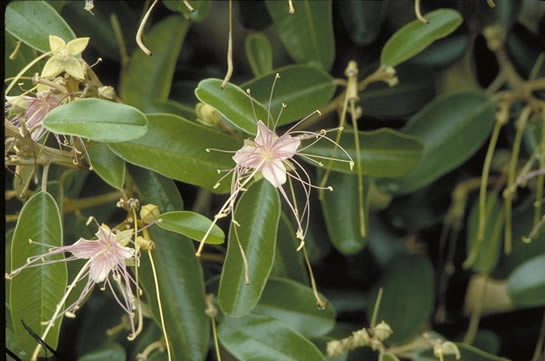In the realm of botany, not all trees are created equal—especially when considering the delicate balance of local ecosystems. The Albizia julibrissin ‘Alba’, commonly known as the ‘Alba’ Mimosa Tree or Silk Tree, stands as a testament to the unseen consequences of introducing non-native species into new environments. This tree, while beautiful with its feathery, fern-like leaves and fluffy, pink flowers, has proven to be more than just an ornamental addition to landscapes. Its invasive nature has allowed it to escape cultivation and move into natural areas where, like all invasives, compete with native vegetation.


This invasive behavior poses several challenges
- Competition with Native Species: The ‘Alba’ Mimosa Tree can outcompete native plants for resources such as sunlight, water, and soil nutrients. Mimosa trees can grow up to 20 to 40 feet tall and have large dense canopies, shading out sunlight and nutrients to desired species. This competition can lead to a decline in biodiversity, as native plants struggle to survive.
- Opportunistic: Mimosa’s produce large amounts of seed pods containing five or more small brown seeds which typically persist on the plant throughout the winter. The seeds can also remain dormant for years. Once the ground is disturbed the seeds will germinate creating a new tree. This is why Mimosa trees are typically found along roadsides, open vacant lots in urban/suburban areas, and along waterways. The seeds can be spread by wildlife and water.
- Physical Damage: Its fast-growing roots can damage sidewalks, foundations, and sewer lines, leading to costly repairs and maintenance issues.
The Case for Jamaica Caper (Capparis cynophallophora)
In contrast, the Jamaica Caper offers an environmentally sound alternative that supports and enhances local ecosystems. Native to Florida and the Caribbean, this evergreen shrub or small tree is well-suited to a variety of landscapes and provides numerous ecological benefits:
- Biodiversity Support: The Jamaica Caper plays a crucial role in local food webs. Its fragrant flowers attract a myriad of pollinators, while its fruits serve as food for birds and other wildlife, supporting the survival and proliferation of numerous species.
- Adaptability and Resilience: As a native plant, the Jamaica Caper is well-adapted to its local environment, requiring less water and maintenance than non-native species. Its resilience contributes to the health and stability of native plant communities.
- Aesthetic Value: With its glossy green leaves, striking white flowers with purple stamens, and interesting fruit pods, the Jamaica Caper is a beautiful addition to any garden or landscape, offering year-round visual interest.

Making the Switch
Replacing invasive species like the Albizia julibrissin ‘Alba’ with native plants such as the Jamaica Caper requires a collective effort from homeowners, landscapers, and local authorities. By prioritizing native plantings, we can work towards restoring natural habitats and promoting ecological balance. Educational outreach and community engagement are key in fostering an appreciation for native species and the vital roles they play in our ecosystems.
In conclusion, while the ‘Alba’ Mimosa Tree may be aesthetically pleasing, its invasive nature necessitates a shift towards more sustainable landscaping practices. By embracing native species like the Jamaica Caper, we not only enhance the beauty of our surroundings but also contribute to the health and diversity of our planet’s ecosystems.
 1
1
